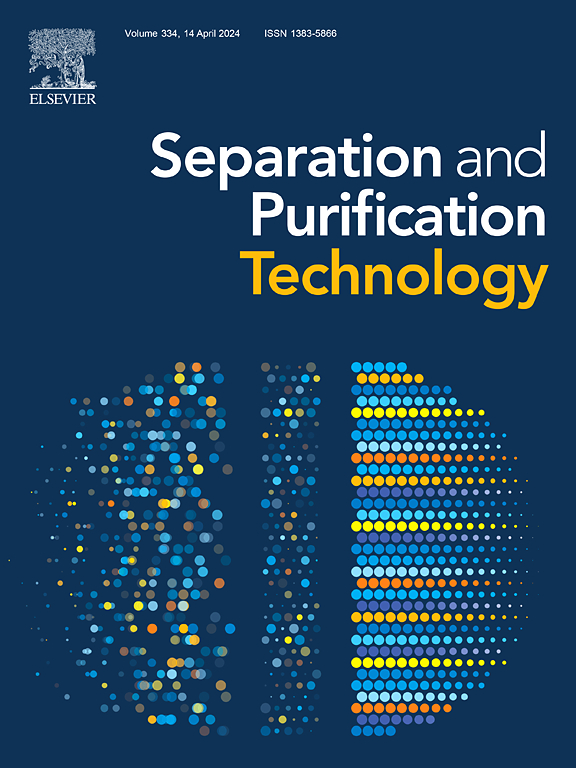Manipulating carbon defects for rapid H2O2 and ·OH formation: A strategy for efficient electrocatalytic organic pollutant degradation
IF 8.1
1区 工程技术
Q1 ENGINEERING, CHEMICAL
引用次数: 0
Abstract
Recently, carbon-based materials (CNMs) have garnered significant interest within the domain of electrocatalytic pollutant remediation. However, the ambiguity surrounding the specific active sites on CNMs hinders the enhancement of their oxidation capabilities. Here, a series of samples were designed to elucidate the actual sites by manipulating the quantity of oxygen-containing functional groups and carbon defects on CNMs (DRG-x). Among the DRG-x, DRG-600 demonstrated superior activity in hydrogen peroxide (H2O2) generation, and exhibited the highest kinetic activity for tetracycline degradation. Interestingly, carbon defects, rather than oxygen − containing functional groups, predominantly boosted the generation of H2O2 and hydroxyl radicals (·OH), thereby endowing it with exceptional pollutant removal efficiency. Besides, through the systematic determinations of reactive oxygen species (H2O2, ·OH and singlet oxygen) within the electrolyte, it was evident that ·OH constitutes 79.3% and plays a pivotal role in the degradation process. This work provided a reference for strategically enhancing the activity of CNMs, particularly in terms of augmenting its electrocatalytic performance and organic degradation capabilities.


求助全文
约1分钟内获得全文
求助全文
来源期刊

Separation and Purification Technology
工程技术-工程:化工
CiteScore
14.00
自引率
12.80%
发文量
2347
审稿时长
43 days
期刊介绍:
Separation and Purification Technology is a premier journal committed to sharing innovative methods for separation and purification in chemical and environmental engineering, encompassing both homogeneous solutions and heterogeneous mixtures. Our scope includes the separation and/or purification of liquids, vapors, and gases, as well as carbon capture and separation techniques. However, it's important to note that methods solely intended for analytical purposes are not within the scope of the journal. Additionally, disciplines such as soil science, polymer science, and metallurgy fall outside the purview of Separation and Purification Technology. Join us in advancing the field of separation and purification methods for sustainable solutions in chemical and environmental engineering.
 求助内容:
求助内容: 应助结果提醒方式:
应助结果提醒方式:


